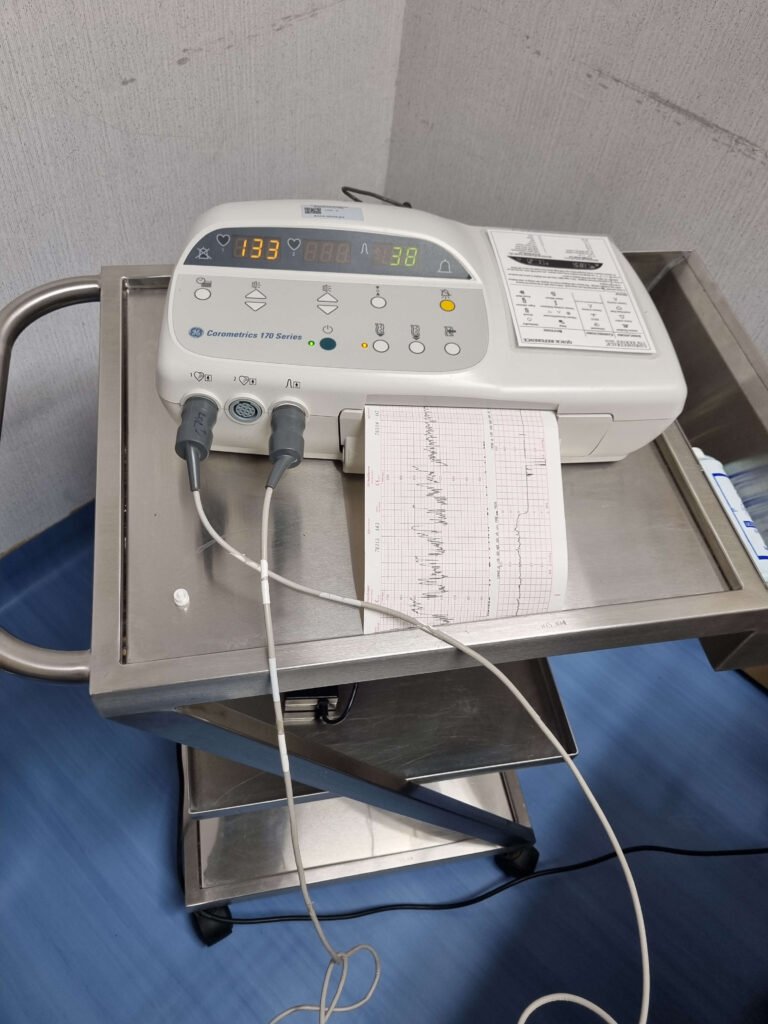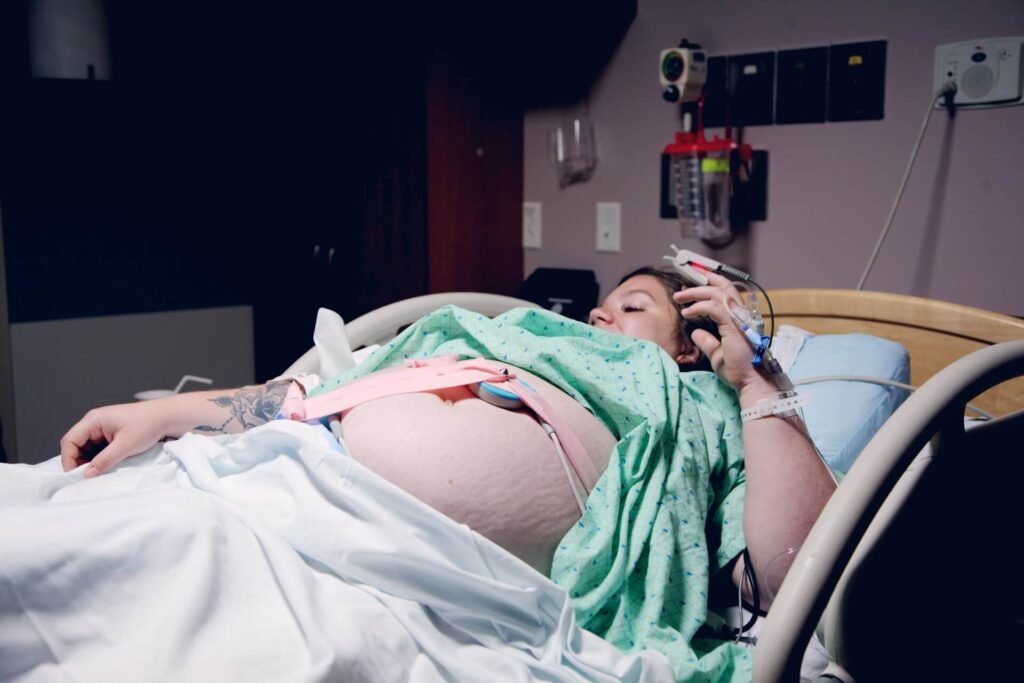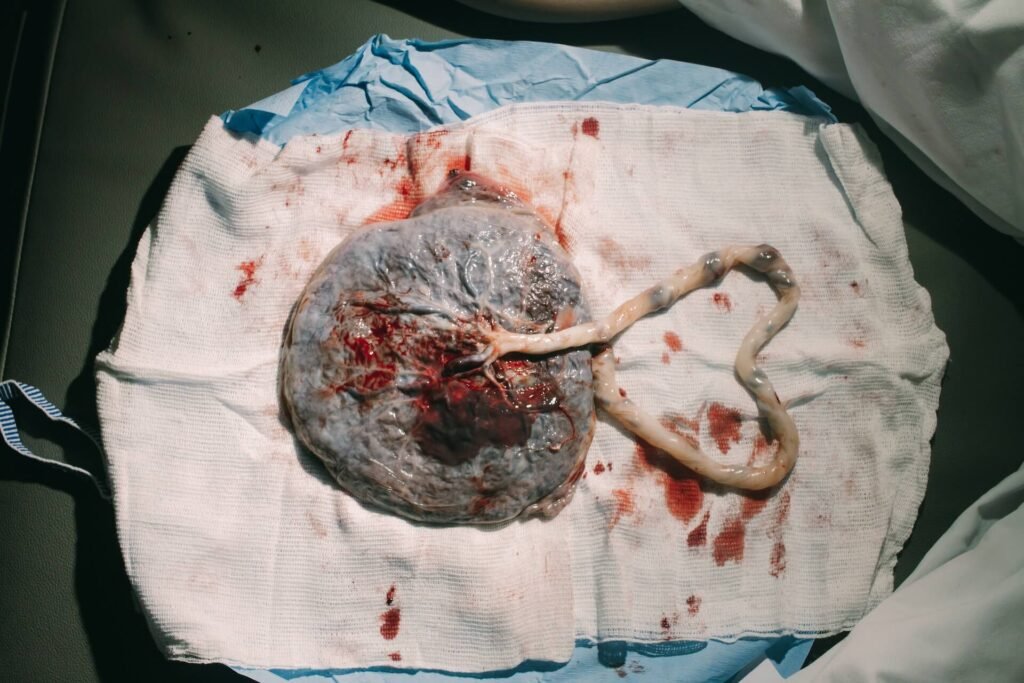Childbirth can be a long affair, and is definitely a messy one. If you’re lucky, however, you’ll have the opportunity to be part of this amazing process that will become a core memory for you, and be a cornerstone in your relationship with your partner. This Article has been split into Dad Role in Preparing for Labour and Dad Role in Labour and Delivery.
Dad Role in Preparing for Labour
This Dad Guide to Labour and Delivery, written by a dad who helped deliver his first child, is all you need to know to prepare for the massive day where you’ll meet your baby. Let’s dive into some essential tips and tricks to make this day as smooth as possible.
Pack the Hospital Maternity Bags, yes, even yours
Yes, your partner has a bag, but you need one too. Ensure you’re well-equipped for the big day. Include essential items like comfortable clothes, toiletries, snacks, and chargers for your gadgets. Don’t forget some entertainment to keep you occupied during downtime, though you may have none.
Even better, communicate with your partner and make sure her bag is packed well in advance and with all things you’ll need.
What to Remember
- Have your ID and hospital paperwork ready, including the hospital delivery payment details, insurance details, and her medical file / history.
- Ensure that the medical file contains a recent report indicating the blood type of the mother.
- Pack snacks and drinks that you both enjoy, as labour can be lengthy.
- Bring chargers and extra power banks for your devices.
- Bring a hot water bag to help with contractions and during the labour.
- Ensure you have change of clothes for 2-3 days for both of you.
- Carry a bluetooth speaker to play music preferred by the mum – this may be hymns, instrumental, meditative, or any other kind that works for her.
- Bring essential oils or calming scents that your partner enjoys.
- Make sure you have a sipper bottle to keep her hydrated – during labour and after delivery, your partner is likely going to be too tired to drink from a bottle and a sipper helps tremendously.
- Pack a piece of clothing to receive your baby in – make sure it’s been washed a few times and is soft to touch. You’ll want to save this for later!
Check out our Hospital Maternity Bag Checklist for more information on things to pack for the Maternity bag for labour.
Plan Your Route to the Hospital
Don’t rely solely on Maps when the contractions kick in. Know the route to the hospital like the back of your hand. Consider traffic conditions, alternate routes, and estimated travel time. Make sure your vehicle is in good working condition and always has a full tank of fuel as the due date approaches. It doesn’t hurt to make sure your tyres are inflated so you don’t risk a flat.
How to Prepare
- Take test drives to the hospital to familiarize yourself with the route and typical traffic conditions.
- Have a backup plan in case of unexpected roadblocks or traffic.
- Keep your partner comfortable during the ride with cushions, blankets, and soft music. This will mean making sure these items are in the car, ready to go.
- Keep the vehicle in good condition, including a full tank of fuel and adequately inflated tyres.
- Make sure you buy and install a good car seat in your car to bring the baby home. If you’re confused about car seats, have a look at types of car seats in India, and car seat regulations.

Make Plan for Pets
Don’t leave things to chance. Make sure you have a plan in place for your pets. This may include a friend coming in to pet-sit, someone taking your dogs to boarding, or anything else you can think of. If you are having some pet-sit, make sure you’ve conducted a dry run of pet-sitting earlier. Make sure they are aware of where all important things are, how stuff works in your house, how to get into your house, etc. Most importantly, make sure it is someone your pets have met before, like, and trust. It is a great idea to have a pet-sitter come and pet-sit for you when you go on a baby-moon!
If you’re going with a boarding facility, reach out to them in advance so there are no last minute complications. Make sure your friend or family member is comfortable getting your pets into their car. Make sure your pets are comfortable getting into a different car than they are used to. Trial runs all the way!

Have a Support Team Ready
It’s not just you and your partner – you’ll need a support team. This might include family members or friends who can offer help, guidance, and a comforting presence. Discuss your plan with them and have a communication network in place. Make sure everyone is aware of the game plan as the due date approaches, and make sure to have backups in case someone is unexpectedly occupied.
What to Do
- Share your birth plan with your support team.
- Make a list of phone numbers and contacts to keep everyone informed.
- Ensure that your support team knows their role and expectations.
- Make sure there’s a backup for people performing vital roles such as taking care of your pets, accompanying you to the hospital, running errands for you, etc.
Stay Informed and Be Prepared
Knowledge is your best friend in this situation. Attend prenatal classes, read books, and ask questions. Learn about the stages of labour, comfort measures, and how you can support your partner. Understanding what’s happening can help you both feel more at ease.
How to Stay Informed
- Attend prenatal classes together and actively participate.
- Read books or articles about labour and delivery.
- Discuss your birth plan and preferences with your partner.
- Check out DadProved for our in-depth articles about what to expect during Labour, including the later portion of this Labour and Delivery Dad Guide.
Comfort Measures in Labour
Comfort is key during labour. Discuss pain management techniques with your partner and be prepared to help her stay comfortable. Bring soothing music, essential oils, or calming scents that your partner enjoys. Brush up on massages, and breathing exercises, and be ready to offer a reassuring hand, your support matters.
What to Remember
- Practice massage techniques that can relieve tension and discomfort.
- Pack your partner’s favourite calming scents or essential oils.
- Create a playlist of her preferred music or soothing sounds.
- Be attentive to her needs and preferences.
- Offer words of encouragement and physical support.
Discuss the Birth Plan
Before the big day arrives, it’s crucial to understand your partner’s birth plan. This plan outlines her preferences for labour, delivery, and postpartum care. Sit down with her to discuss the plan and ask any questions you may have
How to Prepare
- Review the birth plan together and make sure you’re on the same page.
- Ask questions if you’re unsure about any procedures or decisions.
- Discuss your partner’s preferences for pain management and interventions, between yourselves, with your doctor, and with the nursing staff at the hospital you have chosen.
- Do note pain management and interventions may vary – so make sure you’re all on the same page, including the medical team.
- Keep a copy of the birth plan handy to share with the medical team.

Be There and Stay Calm
Above all, be there for your partner and stay calm. Your presence and emotional support are incredibly valuable. Remember that while you may feel nervous, you are both in capable hands, and your baby’s arrival will be a beautiful and life-changing experience.
Your Role
- Offer words of encouragement and remind her of your love.
- Stay calm and composed to reassure your partner.
- Be ready to adapt to any unexpected changes in the birth plan.
Dad Role in Labour and Delivery
Now that you’ve prepped for Labour, let’s look at what happens on the day your child is born! While every labour experience is unique, understanding the basics can help you feel more prepared and confident.

The 4 Phases of Labour and Dad’s role
Childbirth typically unfolds in three main stages and one final stage. Knowig these stages can give you a better grasp of the process and help you support your partner effectively.
First Stage of Labour: Contractions and Dilation
This is where it all begins. Contractions, which might feel like gas pains, bad menstrual cramps, or back discomfort at first, are the real deal. They help the cervix dilate and efface (thin out). This stage has three phases:
- Early Labour (Latent Phase): Contractions start, are usually mild, are irregular (occurring every 5 to 20 minutes) and can last several hours. Please note that your partner’s water may or may not break when the contractions start. The cervix typically dilates to 4 centimetres during Early Labour. Make sure your partner is well hydrated. Taking a bath may make your partner feel a bit better.

- Active Labour: Contractions become stronger and more frequent, lasting 45-60 seconds or more, occurring every 3-5 minutes. The cervix is usually 4 to 5 cms dilated at this stage. You should head to the hospital at this stage.
- Transition Phase: The cervix is usually at 8 cms. This is often the most challenging phase, and may also be the shortest. Strong contractions occur every 2-3 minutes and may last 60-90 seconds. Your partner may feel rectal pressure, and the urge to push. As for pain management, while Analgesics will likely not be administered, epidural anaesthesia may be used. However, this depends on the medical team at your birthing centre.
Things to Expect and Your Role
- Time the contractions and support your partner’s breathing techniques.
- Head to the hospital in the event your partner’s water breaks.
- Consult with your doctor on when to head to the hospital if the water has not broken – They may suggest you time the contractions and only go to the hospital during Active Labour.
- Make sure to carry the packed hospital bags including all medical files and history.
- When you reach the hospital, you will be asked to wait while your partner’s cervix is examined to check for dilation. Depending on the dilation and frequency of the contractions, you may be admitted and taken to your room immediately or asked to wait in designated areas.
- Once you reach the hospital room, and after your partner has settled, unpack the bags to make sure your partner has everything she needs.
- Setup the bluetooth speaker, dim the lights, play the music of choice, and use essential oils and scents. Don’t forget to inflate the yoga ball, it really helps!
- Offer massages, help her find comfortable positions, and keep her hydrated.
- Stay calm and reassure her that you’re there for her – Active Labour is difficult and your partner will be in pain – keep on reading to understand more about pain management options.

Labour Pain Management Options
It’s essential to discuss this with your partner and be prepared for her preferences. Do note her preferences may change during active labour. Thus, it is vital you have spoken at length on this matter prior and are on the same page. We’ll start off with some natural pain management options that your partner can try.
Natural Pain Management
- Breathing Techniques: Encourage deep and rhythmic breathing to manage pain.
- Movement: Swaying, walking, or changing positions can provide comfort. Utilise the yoga ball to help deal with the contractions.
- Massage: Gentle massages can relieve muscle tension.
- Visualization: Guiding your partner to visualize calming scenes can help distract from the pain.

Medical Pain Management
- Epidural: Administered by an anesthesiologist, it provides pain relief from the waist down. A needle and a catheter is inserted into the lower part of your partner’s spine. The catheter is left in to continue providing pain medication. It usually takes about 15 minutes for the epidural to take effect. However, there are limitations on when an epidural can be administered. For instance, medical personnel may not administer epidural if your partner’s cervix is fully or almost fully dilated.
- Analgesics: Pain-relieving medications are delivered through an IV. Generally, this is the first type of medical pain relief offered to a woman in labour. When my partner was in labour with our first, this did nothing to help her.
- Nitrous Oxide: Also known as “laughing gas,” it provides mild relief when inhaled. This is not very common in India and may not be an option generally used at the hospital you have chosen to have your baby. Do make sure to check with the medical staff in advance and plan accordingly.
Your Role
TAKE NOTES, DADS. THIS BIT’S IMPORTANT.
- Discuss pain management options in advance and respect your partner’s choice, both before and during labour. While she may have chosen to not have an epidural, and attempt to have a vaginal delivery without medical pain relief, she is entitled to change her mind. It is your job to support her in her choice.
- Advocate for her preferences with the medical team. It is not uncommon for medical personnel to dismiss significant pain during labour as “normal”. However, pain thresholds vary wildly, and if your partner insists on medical pan relief, TRUST YOUR PARTNER’S JUDGEMENT. BE FIRM WITH THE MEDICAL PERSONNEL WHO MAY ATTEMPT TO COAX YOUR PARTNER INTO A VAGINAL DELIVERY SANS MEDICAL PAIN RELIEF.
- IT YOUR JOB TO ADVOCATE FOR YOUR PARTNER AND HER RIGHTS. YOUR PARTNER IS ALLOWED TO ASSERT HER RIGHT TO HAVE THE PAIN MANAGEMENT OPTION SHE PREFERS, AND THERE IS NO SHAME WHATSOEVER ONE WAY OR ANOTHER. BE POLITE, YET FIRM WITH MEDICAL PERSONNEL.

Second Stage of Labour: Pushing and Birth
The second stage of labour is when your baby makes their grand entrance. It starts when the cervix is fully dilated and ends with your baby’s birth. This stage may last 15 minutes to several hours. Contractions are still involved, but now it’s time for pushing.
Your Role
- Support your partner in the pushing process. Be her cheerleader.
- Encourage her and offer sips of water between pushes. Help her find the optimal position.
- Stay calm and composed. Your reassuring presence can help your partner feel more at ease.
- Remember that you’re part of a capable medical team.
- Trust in the process and your partner’s strength.
Things to Expect in a Vaginal Delivery
In the event your partner is having a vaginal birth, be prepared for all the fluids that usually accompany this amazing moment. There will be amniotic fluid, blood, and there may even be some stool from the pushing your partner is doing. The first thing visible would be your baby’s head as they descend into the world!
Your Role
- Be ready to witness the miracle of childbirth, including all that it entails – fluids, blood, and possibly some stool. Do not be fazed.
- In the event your partner has passed a bowel moment, clean it up and keep it to yourself.
- When your baby comes along, generally, the first thing visible is the head. The medical personnel will then help the mother deliver the baby.
- Your baby will be covered in afterbirth and will generally be pale. Do not be alarmed.
- Insist on being the one to cut the umbilical cord, if that is something you wish to do. You may have to clear this with the medical personnel earlier. If possible, make sure you do as it will become a core memory for you.
- Watch in amazement as your baby takes their first breath on earth and passes urine – this one is an important step in determining the baby’s health.
- Congratulate the mother, your’e both parents now!
Third Stage of Labour: Delivery of the Placenta
After your baby is born, the third stage involves delivering the placenta. It usually takes 5-30 minutes and is often less eventful than the previous stages. At this stage, you may be asked to leave the room, as the medical personnel evaluate your partner for tears. In case some time has elapsed from delivery, the doctors may have to scrape out the remnants of the placenta by hand. Be aware of the medical procedures involve
Your Role
- Support your partner as the medical team takes care of the placental delivery.

Fourth Stage of Labour
The fourth stage of labour is the first couple of hours after your partner delivers. If your partner had tears or an episiotomy (medical incision to expand the birth canal – this is done in the perineal area between the vaginal opening and rectum), these are stitched.
Cesarean Section (C-Section)
In some cases, a C-section may be necessary. It’s a surgical procedure where the baby is delivered through an incision in the abdominal wall and uterus. This can be planned (elective) or occur due to medical reasons during labor.
Your Role
- Stay informed about the C-section process and what to expect.
- Provide reassurance and comfort to your partner before and after the procedure. This is a major procedure and the recovery period will be greater than with a vaginal delivery.
- You are not likely to be allowed in the room when the procedure is happening.
- Be prepared to bond with your baby and help with post-surgery care.

What happens after Delivery? What is the after birth care for mom and newborn?
Check out our post on what happens after delivery. We cover postpartum care for the mother, the after delivery health checks and processes for the newborn, vaccination process, lactation and breastfeeding, etc.
Also check out our post on dad newborn bonding to set that ball rolling!
Conclusion
Childbirth is a transformative experience for both you and your partner and will become core memories for the both of you. Understanding what happens during labor is essential to being an active and supportive dad, and this Dad Role in Labour and Delivery has all the information you will need for the big day.
No matter how the journey unfolds, remember that your presence, love, and support are the most significant gifts you can offer. Be ready to embrace the adventure of becoming a parent, and you’re sure to cherish this momentous day for the rest of your lives.
All the best!

Leave a Reply